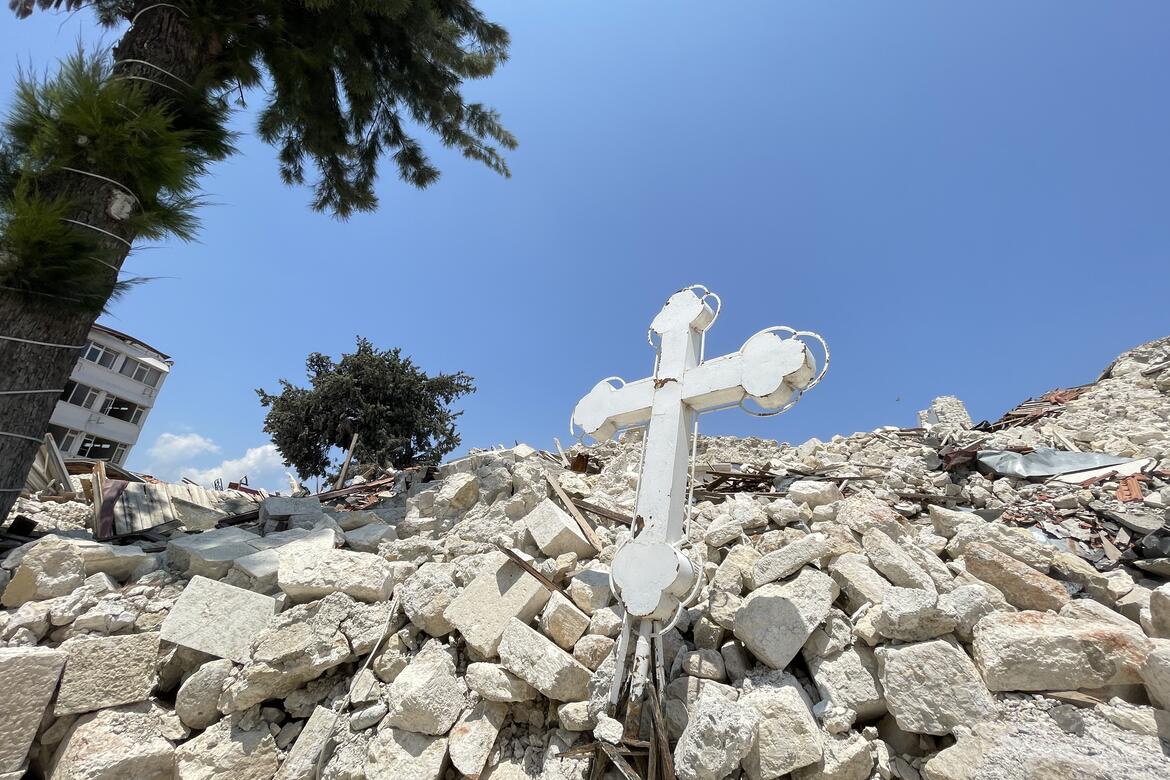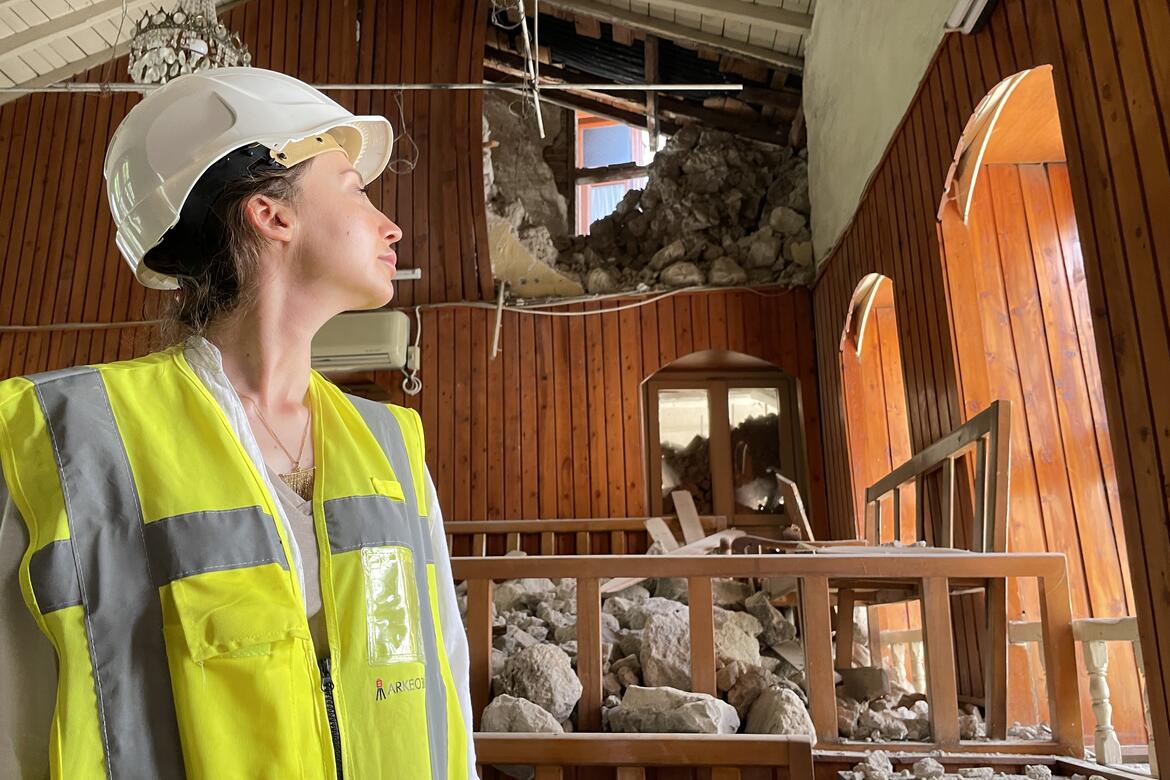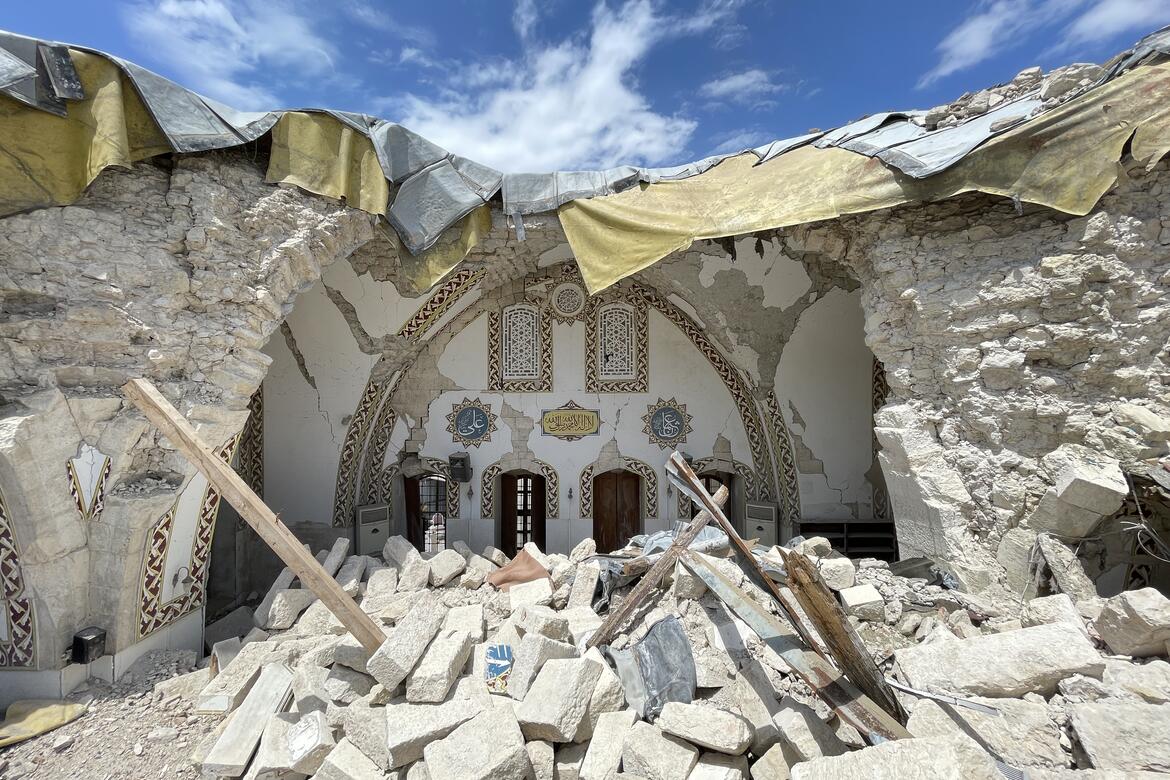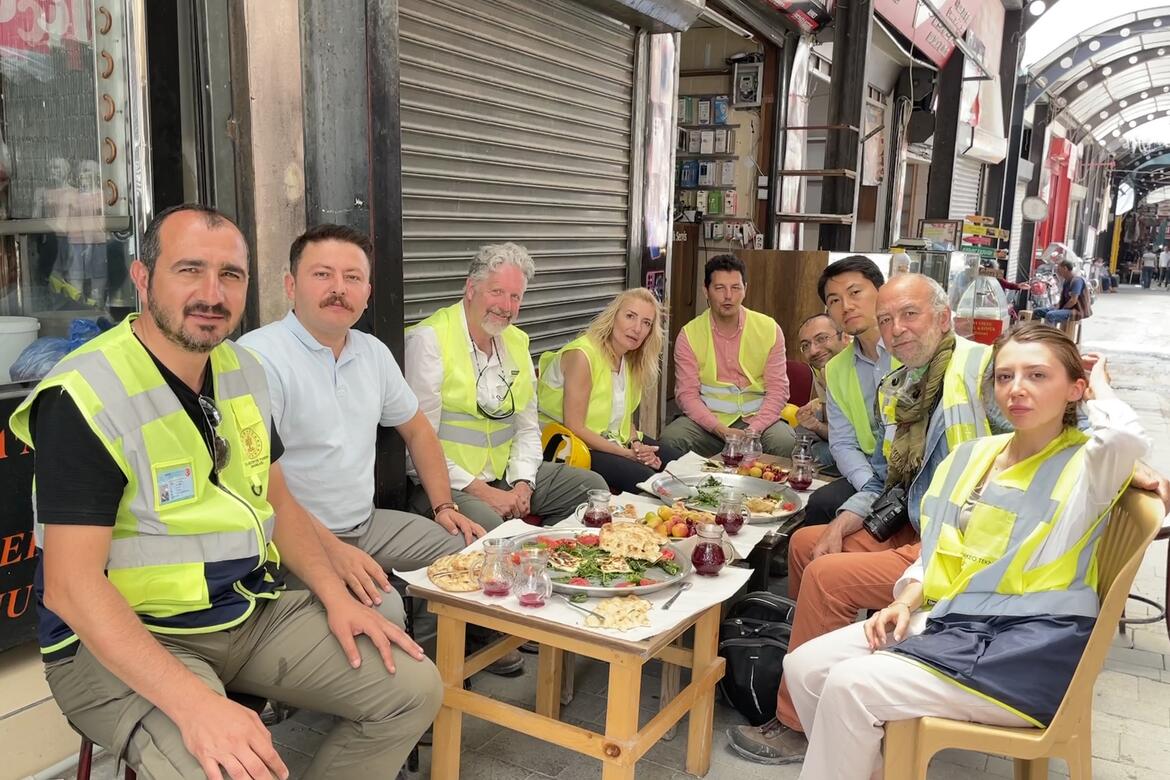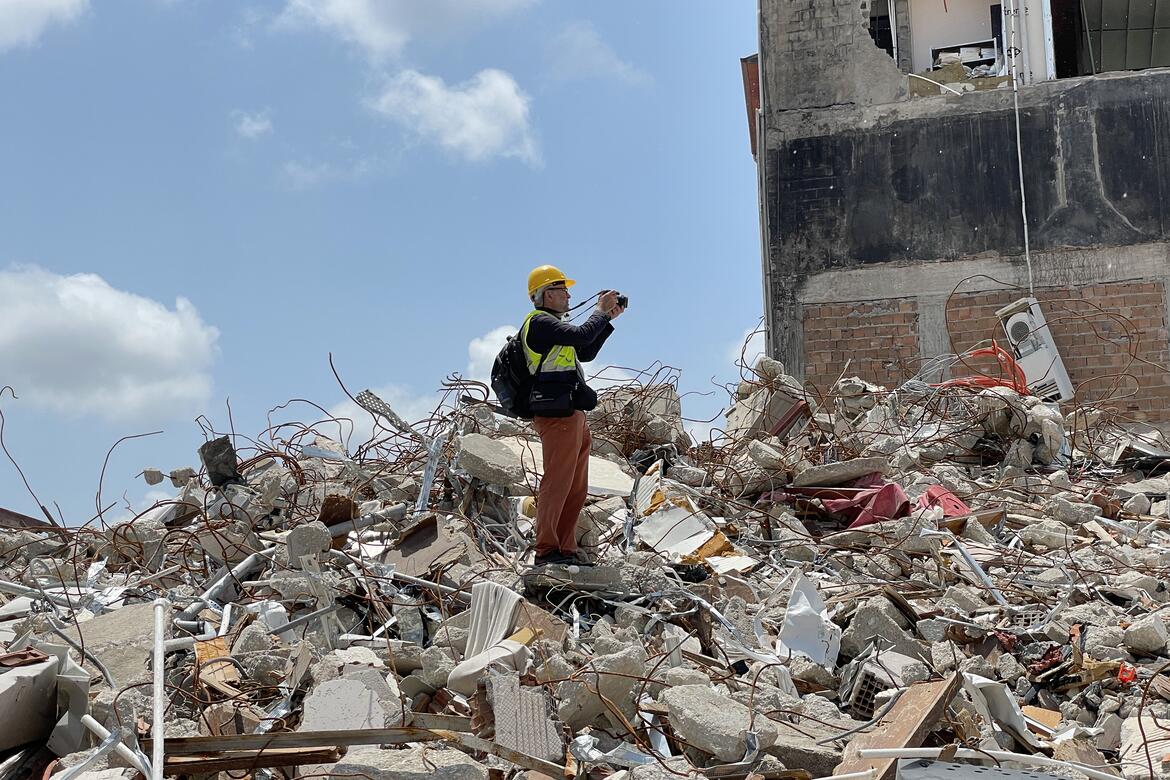Rising from the Ruins: A Post-Earthquake Türkiye Travelogue by Program Manager Hung-hsi Chao
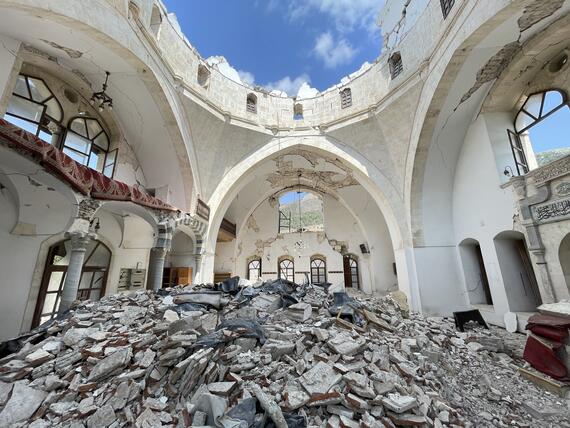
With millennia of history, the Turkish city of Antakya (formerly Antioch) has played host to a wealth of cultures ranging from the Greeks to the Crusaders to the Ottomans. But after the devastating earthquakes of February 6, 2023, which caused tremendous loss of life and property in both Türkiye and Syria, Antakya gained another, sadder claim to fame: the city worst affected by the disaster.
In the late evening of June 17, 2023, I and the rest of World Monuments Fund’s (WMF) scientific consulting team landed in Türkiye’s disaster zone to survey the damage to heritage sites with the official permission of Türkiye’s Ministry of Culture and Tourism. Due to the disruption of aftershocks, previous structural surveys did not fully reflect the present condition of the damaged buildings, and ascertaining the true scope of the situation was crucial. My colleagues on the team were international and local experts.*
Prior to departure, we conducted thorough research on Antakya and its seismic history and acquired a complete list of registered monuments, drone photos of damaged heritage sites, and a general survey of the historic district from the government. We also prepared mission guidelines and a methodology for building assessment and risk mitigation informed by our previous experience in other disaster zones, such as Haiti in 2010 and Kathmandu in 2015.
Fitted out with work boots, hardhats, goggles, N95 masks, leather gloves, and other protective gear, we moved as a group through the sites to ensure our safety. With logistics and connections support from WMF’s local liaison, Buse Ceren Gül, a local architect who has been leading advocacy and outreach efforts in the area since the earthquake, WMF’s delegation was able to comb every corner of Antakya’s collapsed historic district—including the community bazaar, religious monuments, residential and commercial structures, and archaeological sites—and touch base with key stakeholders and local authorities. Our team conducted structural assessment of selected damaged cultural heritage sites, such as St. Paul's Church (part of the Greek Orthodox Patriarchate of Antioch), Ahmediye Mosque, and Antakya Synagogue. We also installed simple crack monitors to collect data about structural conditions in preparation for physical intervention in the next phases of work, including stabilization, reconstruction, restoration, and seismic enhancement.
Our team took the opportunity to build connections with young professionals, community leaders, the governor of Hatay Metropolitan, the regional director of the Directorate General of Foundation, the director of the Historic District of Antakya Municipality, and the deputy director of the Antakya Regional Council for the Protection of Monuments and Sites. As such, this trip laid the foundation for planning projects in the future and working with the City for the recovery of Antakya in the long term.
As we saw with our work at the East Japan Earthquake Heritage Sites in 2011, WMF’s continued advocacy, knowledge sharing, and communication with patience means a great deal and brings hope to local communities impacted by disasters. It was an honor to work alongside such a capable team, and I am sure that Antakya’s recovery through joint efforts between international and local organizations will serve as an encouraging example to other cities affected by the disaster in the future.
Sincerely,
Hunghsi Chao
Project Manager
* The team members were Yavuz Özkaya (project lead architect at the Association for the Protection of Cultural Heritage in Türkiye (KMKD)), Evangelia Şarlak (historian and former director of KMKD), Stephen Kelley (conservation architect and engineer and member of the International Scientific Committee on the Analysis and Restoration of Structures of Architectural Heritage (ISCARSAH)), Muhammet Arslan (disaster zone excavation director), Umut Almac (civil engineer and member of ISCARSAH and the International Scientific Committee on Risk Preparedness of the International Council on Monuments and Sites (ICOMOS-ICORP), Buse Ceren Gül (architect based in Antakya), and Emre Kishalı Kocaeli (earthquake engineer and ICOMOS-ICORP member).

